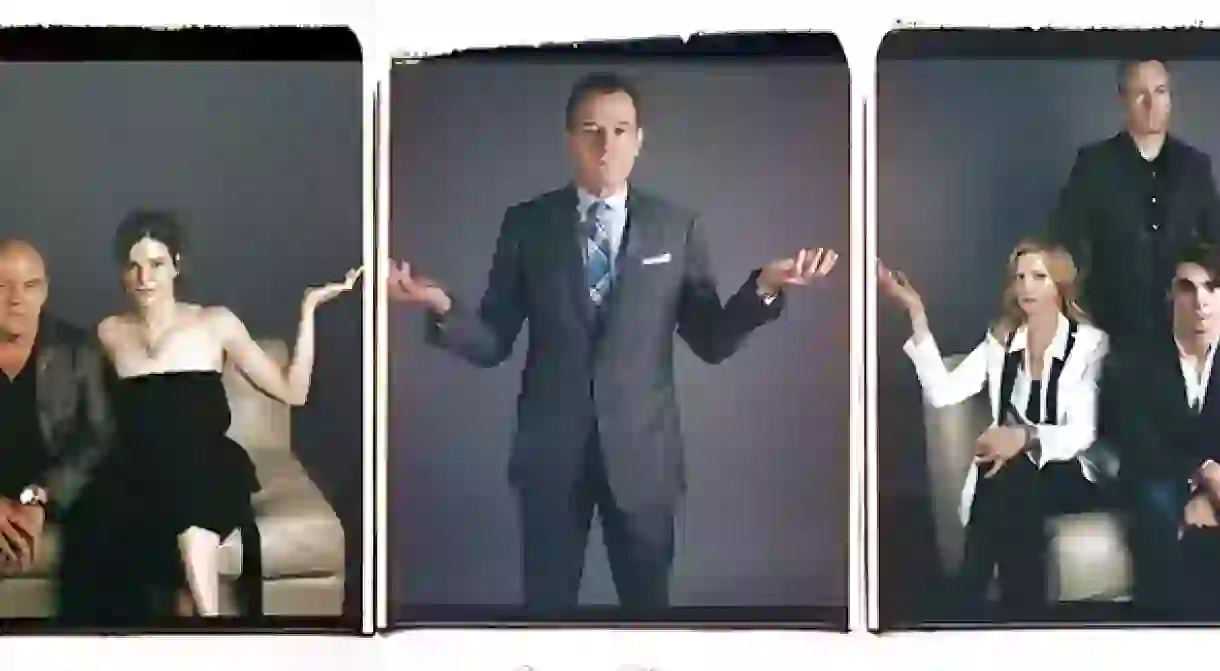This New York Photographer Uses One of the Rarest Cameras in the World

Myrna Suarez is no ordinary photographer. The New York City-based artist works on one of the rarest cameras in the world, with striking results.
Culture Trip: Can you describe your camera and why it’s so rare?
Myrna Suarez: The Polaroid 20×24 camera has perhaps the most unique process in the world. It was built in 1976 by Dr. Edwin Land, the inventor of Polaroid Film, to showcase the quality of Polacolor II film at the 1976 shareholders meeting. There are only five in use today worldwide [one of which artist Chuck Close famously uses to photograph his subjects].

MS: It wasn’t really created to be a portrait camera but Polaroid started inviting artists to their gallery in Cambridge, Massachusetts to see what they could do with it, and the Polaroid 20×24 Tribe was born. It’s like your old peel-apart Polaroid, except much much bigger. The process and the images themselves are just magical. I find that my photographs on Polaroid are lasting—you never get tired of looking at them as they are forever revealing something new to the viewer. To me, they are just mysterious creatures that are endlessly fascinating.

CT: What are the benefits of working with a camera like this? What drew you to this form of photography?
MS: I stumbled into this Polaroid club by happenstance. I took a class with John Reuter, the director of the Polaroid 20×24, on film transfer, and the class was in the studio where the camera lived. I was mesmerized. I called John the next week and asked if they took interns—and I never left. I was certainly the oldest and longest-running intern Polaroid has ever had!

MS: The only way to learn on the camera was to be 100 percent hands-on. My first job was with William Wegman and his weimaraner dogs. He asked me to walk the dogs and I didn’t want to tell him I had never walked a dog in my life—and those dogs are big. I took them around SoHo and people were yelling, “Is that Chip or Bobbin?”. Some kindly stranger helped me untangle the leashes so I didn’t trip over myself. It was a great day. During this time, I worked with Chuck Close, Mary Ellen Mark, Joyce Tenneson, Julian Schnabel, Timothy Greenfield-Sanders and Lyle Ashton Harris.

CT: Can you explain your technique?
MS: This type of shooting is difficult. It’s 50 percent art and 50 percent discipline. When you reveal a giant-size portrait of someone, you’d better be confident. You don’t have the luxury of digitally tweaking an image before the sitter sees it, and you can’t take a few shots to see what it looks like. I rely a lot on instinct, and the years of experience I have working with this beast. We also have a great team in John Reuter and Nafis Azad, who operate the camera. I research a lot about the person [I’m photographing] and try to find common ground. I also come up with lots of ideas, as sometimes trying to explain how the photographs will look is half of the battle. I don’t use props, except for chairs. I’m looking for a lasting image of a person at that moment in time.

CT: Can you tell us more about your series Up Close with Chuck Close?
MS: I started photographing at all the Chuck Close shoots. It’s a tiny crew of four, including Chuck. I just thought it would be cool to document Chuck and his sitters. He uses the photographs for paintings, so I think this element of his process is wonderful to document. We now call it “the hollywood shot.” I think we have about 50 and counting. From Lou Reed to Harrison Ford, Gisele Bundchen, Dana Schutz, Philip Glass, George Clooney, Laurie Anderson, Jessica Lange, Meryl Streep, Michael Stipe, and many other artists.

CT: How has your time in the music business influenced your art?
MS: I worked in the music business for over 10 years; I worked with Mariah Carey, John Mellencamp, Lauryn Hill, Wyclef Jean, a lot of amazing writers and musicians—so I have respect for what it takes to write a song, to command an instrument, to sing on demand, and what it takes to put on a great show. When I photograph anyone who has success, I take that into consideration. I try to make it a creative collaboration and not just me taking their picture. I always say, “It’s my photograph, but it’s your face.”

CT: Do you exclusively photograph people, or have you ever photographed locations?
MS: I was on the road with a band and the drummer came off stage and told me it was rough night for her—her “hands were heavy.” That is how I feel when I try to take landscapes. My hands are heavy.

CT: Are there any artists or photographers who have had a notable influence on you?
MS: Chuck Close is by far my biggest influence, personally. He is such a funny, bawdy, hard-working, talented artist. He always says, “Inspiration is for amateurs. The rest of us get to work.” I read a lot, so writers conjure up great visuals for me; Milan Kundera, Gabriel García Márquez, Jhumpa Lahiri. And the Old Masters created the best poses!

CT: Favorite artists/photographers?
MS: David Cronenberg and all his films, Paul Strand and his portraiture, Inge Morath for all her on the set stuff, Mary Ellen Mark was just a genius, and recently I’m obsessed with this Irish photographer named Helen Sloan. She shoots all the behind-the-scenes on Game Of Thrones.













